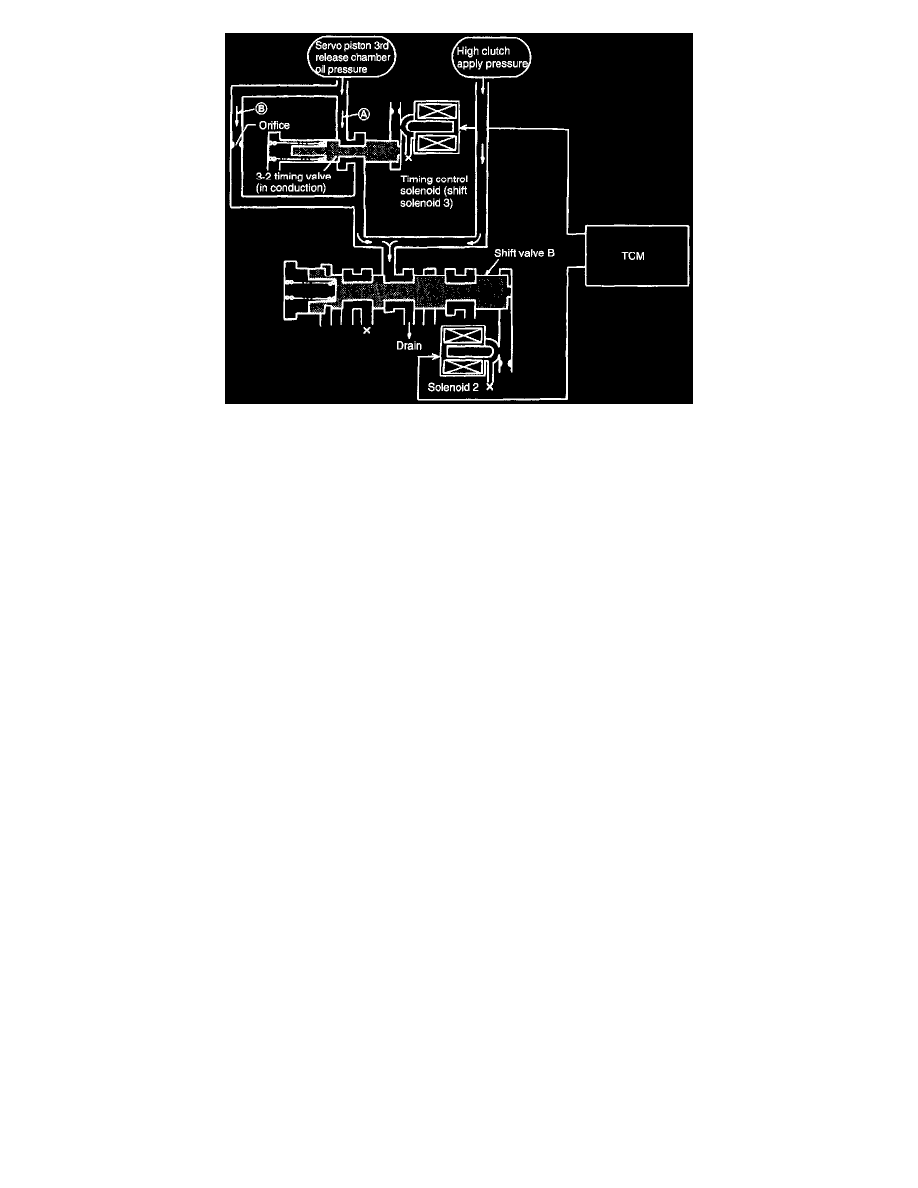Impreza Coupe FWD F4-1820cc 1.8L SOHC (1995)

-
When the 3-2 Timing Valve conducts, oil pressure applied to the 3rd release chamber is quickly released through passage (A).
-
When the 3-2 timing valve does not conduct, oil pressure applied to the 3rd release chamber is slowly released through passage (B) (provided with
an orifice).
LOCK-UP CONTROL
-
The lock-up engaging and disengaging conditions are set for each gear shift range, gear position and shift pattern and correspond to the throttle
position and vehicle speed, and the duty solenoid is electronically controlled by the Transmission Control Module (TCM) controls the lock-up
clutch. The lock-up clutch engagement and disengagement are controlled by the lock-up control valve.
-
When engaging and disengaging:
The shuttle shift valve d is actuated by the hydraulic pressure from the shift valve A. It controls the position of the lock-up control valve for
engaging or disengaging the lock-up clutch.
1. Non-Lock-up Operation (1st, N, R, and P range).
-
Since no operating pressure is generated from the shift valve a, the shuttle shift valve D sets the lock-up control valve in the 'disengaging"
position.
-
The lock-up operating pressure (torque converter clutch regulator pressure) acts on the lock-up clutch disengaging circuit, while the engaging
circuit communicates with the oil cooler circuit. Accordingly, the lock-up clutch is disengaged by the pressure difference.
2. Lock-Up Operation (4th speed of D range).
-
The operating pressure generated by the shift valve a is applied to the shuttle shift valve D, which pushes the lock-up control valve to the
"engaging" position. Since the lock-up operating pressure is applied to the engaging side circuit while the disengaging circuit is drained, the
lock-up clutch is engaged by the pressure difference.
-
Smooth Control.
The duty solenoid B is controlled by the Transmission Control Module (TCM) and controls the operation of the lock-up control valve.
Because the lock-up operating pressure is controlled by the lock-up control valve, the force applied to the lock-up clutch is controlled for
smooth clutch operation. When locking up, the clutch is set in the half-engaged state beforehand. After this, the lock-up operating pressure is
gradually increased to achieve smooth locking up.
